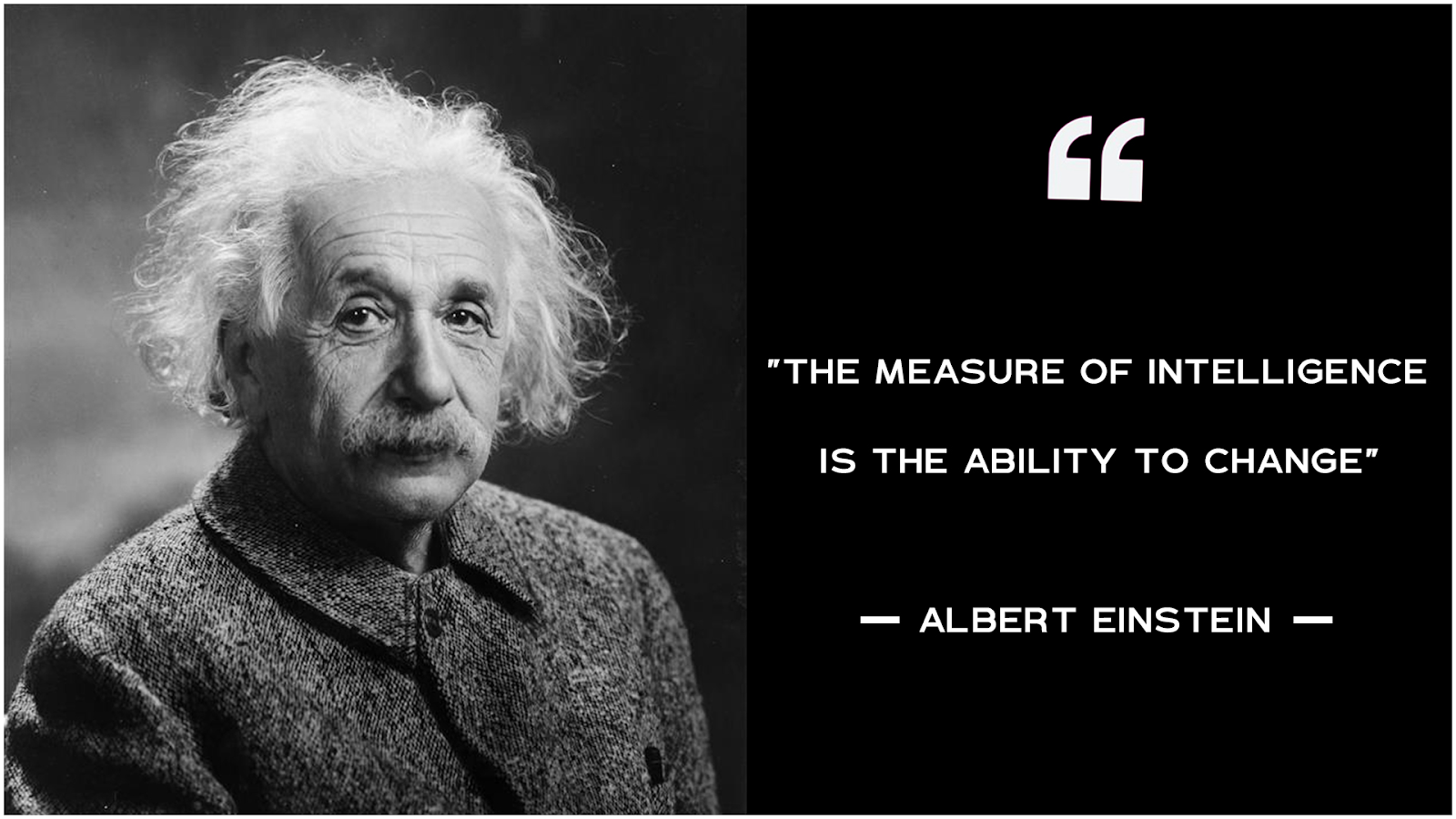Table of Contents
Introduction
In the fast-evolving tech landscape, Artificial Intelligence (AI) continues to push the boundaries of innovation and possibility.
From powering self-driving cars to delivering personalized Netflix suggestions, AI is reshaping industries and redefining the way we live and work. But have you heard of Artificial Intelligence Optimization (AIO)? If not, you’re in the right place.
This article explores what AIO is, why it matters, and how it’s transforming decision-making across industries. Think of it as the next step in AI’s evolution—where intelligence meets precision.
What is AIO?

- Beyond search engines: AIO focuses on crafting content that performs across AI platforms like search engines, LLMs, chatbots, and voice assistants.
- Core principle of AIO: It ensures content “speaks the same language” as AI systems, which analyze context, intent, credibility, and depth—not just keywords.
- Content as AI’s source: Aligning with how AI interprets and delivers information positions your content as the material AI pulls from to generate answers, summaries, and recommendations.
- Redefining optimization goals: The focus is no longer just ranking on the first page of search results. Instead, it’s about becoming the reliable source that AI consistently references across platforms.
- Business advantage: AIO helps businesses and creators adapt to a world where AI drives how people search, consume, and act on information.
- Long-term value: By adopting AIO, you’re not only improving visibility but also building authority, trust, and relevance in the AI-powered digital era.
How Does AIO Work?
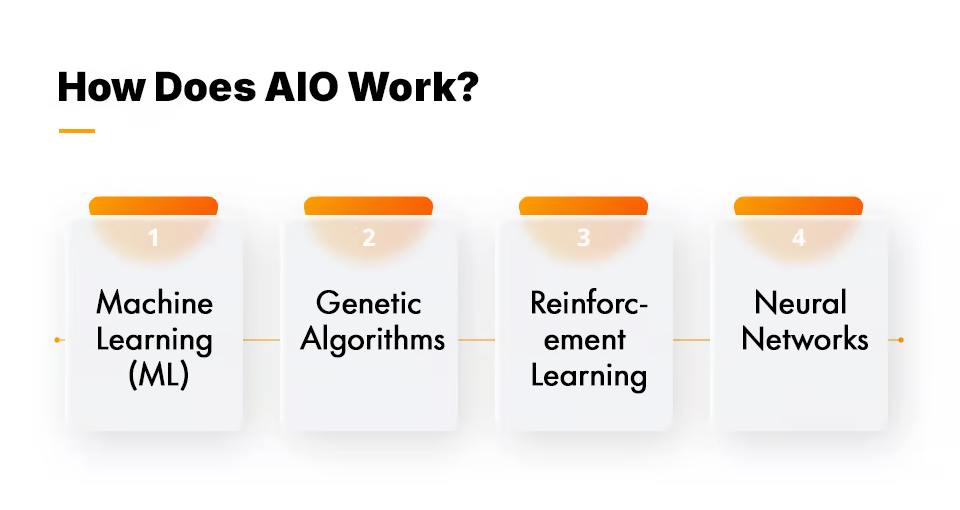
AIO makes use of multiple AI techniques to achieve optimization, including:
- Machine Learning (ML): Uses algorithms to process large datasets, detect patterns, and generate predictions. With continuous learning, these systems improve their ability to optimize outcomes over time.
- Genetic Algorithms: Modeled after natural selection, they evolve solutions through generations, keeping the most effective options while discarding weaker ones.
- Reinforcement Learning: Trains systems through trial and error, rewarding optimal choices and discouraging poor ones to refine decision-making.
- Neural Networks: Mimic the human brain to map complex input-output relationships, allowing AIO to address highly sophisticated optimization challenges.
By integrating these methods, AIO can solve problems too complex or time-intensive for humans to handle manually.
Why AIO Matters
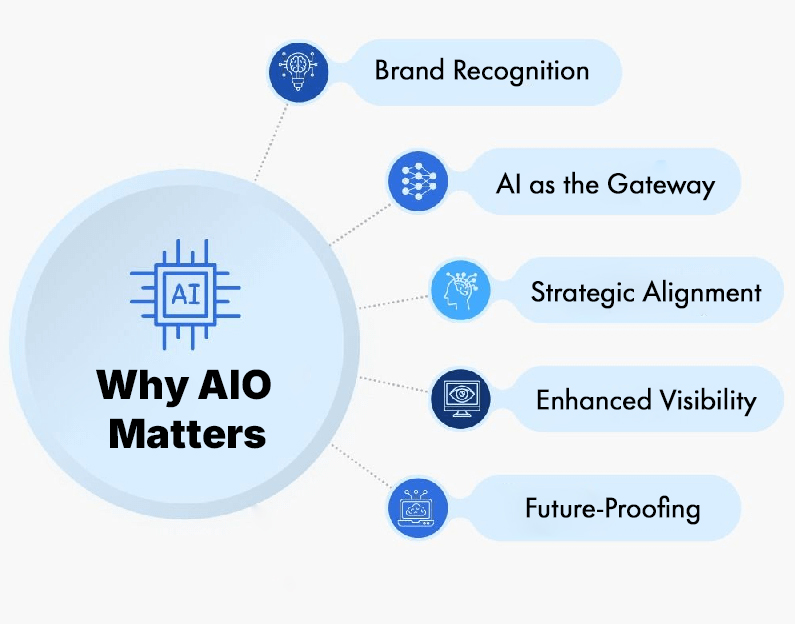
As AI becomes the primary way people discover and interact with brands, it’s no longer enough to rely on traditional SEO. Artificial Intelligence Optimization (AIO) ensures your brand is accurately represented across AI-driven platforms.
- Brand Recognition: AIO ensures your brand is clearly recognized and represented across AI-driven platforms, enhancing visibility and engagement.
- AI as the new gateway: With younger generations increasingly using AI assistants and chatbots, AIO ensures your brand shines in AI-driven discovery.
- Strategic alignment: AIO aligns your brand narrative with how AI processes and presents information, creating consistent messaging across platforms.
- Enhanced visibility: Optimizing for AI allows your brand to reach audiences through emerging AI-driven channels effectively.
- Future-proofing your brand: Early adoption of AIO builds authority, trust, and a strong competitive advantage in the AI-powered digital landscape.
Key Components of AIO
Effective AIO implementation requires a multi-faceted approach that addresses different aspects of AI-powered search optimization. Here are the five core components every AIO strategy must include:
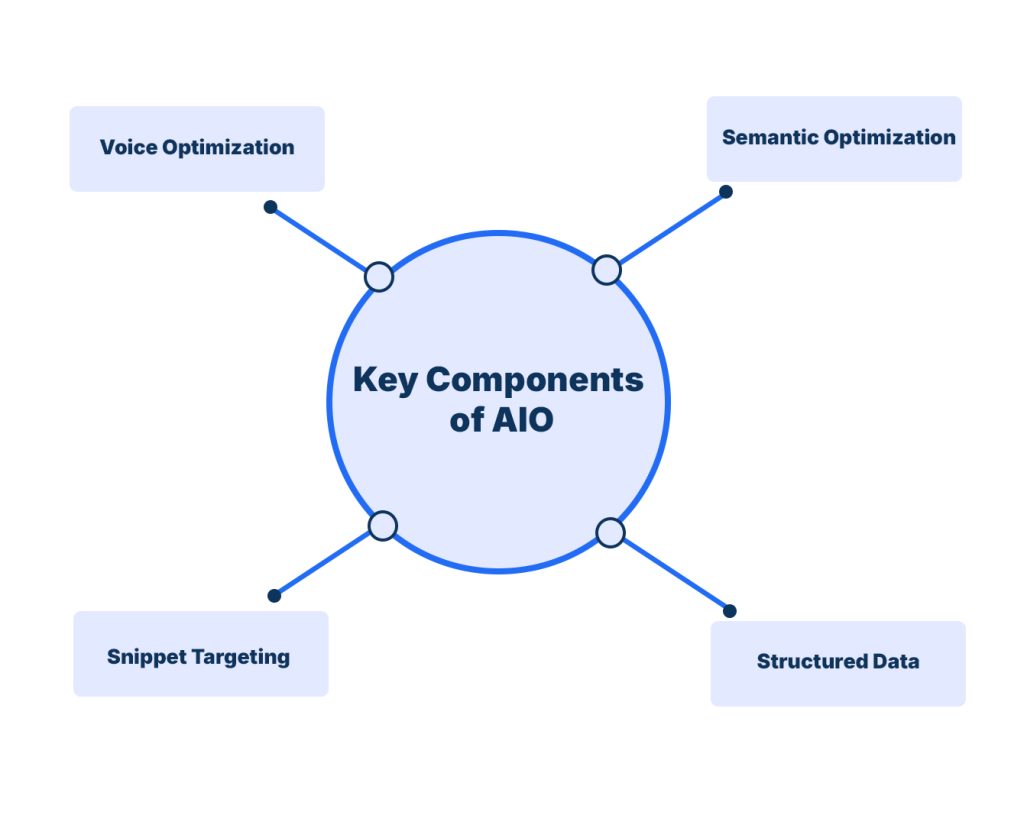
- Semantic Optimization: Creating content that aligns with natural language processing and semantic search algorithms, focusing on intent satisfaction rather than keyword density.
- Structured Data: Advanced schema markup and structured data that help AI systems understand and categorize your content for better visibility in AI-generated results.
- Snippet Targeting: Strategic content formatting and optimization specifically designed to capture featured snippets and position-zero results across search engines.
- Voice Optimization: Optimizing for natural language queries and conversational search patterns used in voice search and AI chatbot interactions.
Benefits of AIO

Adopting Artificial Intelligence Optimization (AIO) offers brands more than just improved search performance—it transforms how your content is discovered, interpreted, and presented across AI-driven platforms.
- Enhanced Visibility: AIO ensures your brand is accurately recognized and represented across AI-driven platforms, from chatbots and voice assistants to AI-powered search engines.
- Better Engagement: By aligning content with how AI interprets intent, context, and relevance, AIO helps deliver more meaningful and personalized experiences to users.
- Consistent Messaging: AIO helps maintain a unified brand narrative across all AI-generated outputs. Whether it’s summaries, recommendations, or conversational responses, your brand voice and message remain consistent, building credibility and trust.
- Future-Ready Strategy: As AI continues to shape how people search for and consume information, AIO prepares your brand for the next generation of digital discovery.
- Competitive Advantage: Brands that implement AIO early gain a strategic edge by establishing authority and trust in AI ecosystems before competitors. This positions your business as a reliable source for AI-generated answers, enhancing brand perception and market influence.
Features of AIO
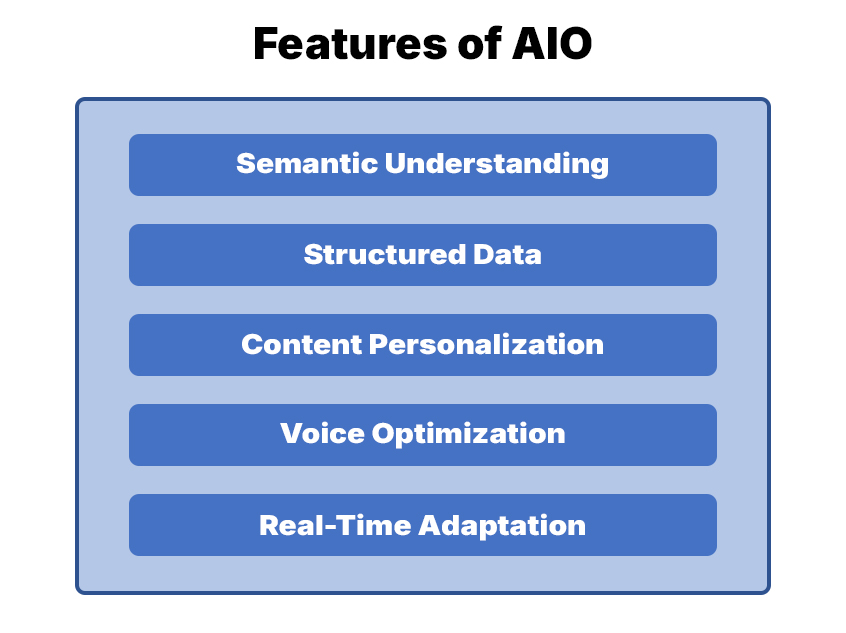
- Semantic Understanding: AIO focuses on creating content that aligns with AI’s natural language processing and understands user intent rather than just keywords.
- Structured Data Integration: Uses schema markup and structured data to help AI systems categorize and interpret content accurately for enhanced visibility.
- Content Personalization: Tailors content dynamically based on AI insights into user behavior, preferences, and interaction patterns.
- Voice Optimization: Optimizes content for voice search, chatbots, and AI-driven conversational interfaces.
- Real-Time Adaptation: Continuously refines and updates content based on AI feedback and evolving user queries to maintain relevance.
Real-World Case Studies
Adobe
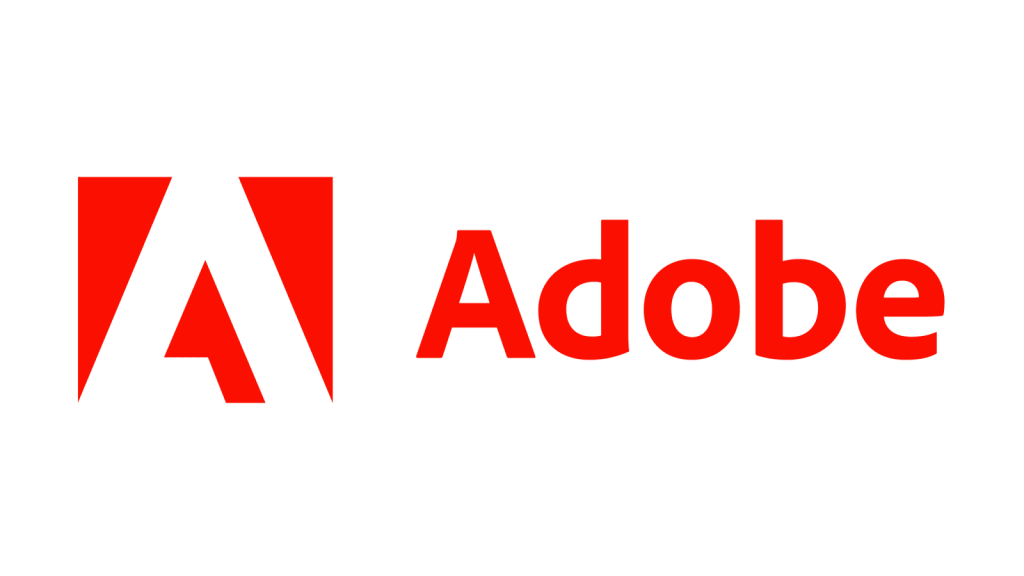
- AI platforms collect and analyze vast amounts of customer data, from browsing habits to purchase history.
- Machine learning models forecast future actions, such as the likelihood of buying or churn risk.
- Delivers tailored messages, offers, and content instantly across email, ads, and websites.
- Adjusts marketing strategies on the fly based on live customer interactions.
- Personalized experiences lead to stronger customer connections, better engagement, and improved conversion rates.
Yum Brands

- AI examines what customers frequently buy, favorite meal combos, and ordering times to predict future demand.
- Tracks app usage, loyalty rewards, and campaign interactions to identify high-value customers.
- Places ads across platforms (social media, apps, delivery partners) based on where customers are most active.
- Creates targeted deals, such as discounts on a customer’s favorite menu item or reminders to reorder.
- Uses geolocation data to push real-time offers when customers are near a store.
Shopify

- Refines product listings to be more engaging and aligned with customer search intent.
- Generates and adjusts meta titles and descriptions to match trending queries.
- Identifies high-performing keywords based on real-time search data and integrates them seamlessly into content.
- Continuously adapts to emerging search trends, ensuring products remain visible.
- Enhances search visibility, driving more organic traffic and higher conversion potential.
Buzzfeed

- AI scans social media, search queries, and news sources to identify what’s gaining traction.
- Understands what specific customer segments engage with most, from formats to themes.
- Generates personalized blogs, videos, or social posts aligned with both trends and audience interests.
- Keeps a creative layer where writers/designers refine AI drafts, ensuring originality and brand voice.
- Delivers consistent, relevant, and engaging content that attracts repeat visitors and boosts SEO rankings.
Conclusion
Artificial Intelligence Optimization (AIO) marks the next big step in intelligent decision-making. Merging AI capabilities with optimization strategies enables businesses and organizations to tackle complex challenges, enhance efficiency, and spark innovation.
With data volumes growing and problems becoming more intricate, AIO is set to become a vital force in shaping the future.
Whether you’re a tech enthusiast, a business leader, or simply curious about what’s ahead for AI, AIO is a trend worth watching—it’s already making an impact, and its influence is only set to grow.
Deepak Wadhwani has over 20 years experience in software/wireless technologies. He has worked with Fortune 500 companies including Intuit, ESRI, Qualcomm, Sprint, Verizon, Vodafone, Nortel, Microsoft and Oracle in over 60 countries. Deepak has worked on Internet marketing projects in San Diego, Los Angeles, Orange Country, Denver, Nashville, Kansas City, New York, San Francisco and Huntsville. Deepak has been a founder of technology Startups for one of the first Cityguides, yellow pages online and web based enterprise solutions. He is an internet marketing and technology expert & co-founder for a San Diego Internet marketing company.

